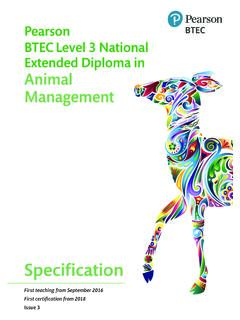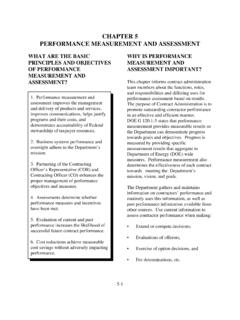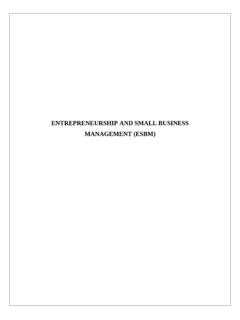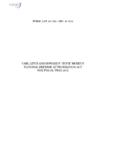Transcription of Unit 5: International Business
1 BTEC International Business UNIT 5: International Business Pearson BTEC International Level 3 Qualifications in Business Delivery Guide Issue 1 February 2020 Pearson Education Limited 2020 1 Unit 5: International Business Delivery guidance Learners are likely to be familiar with a number of global Business organisations in their role as consumers or in a workplace setting. This unit gives learners the opportunity to understand how globalisation can have an impact on all businesses, regardless of their size. In approaching this unit, therefore, you have the opportunity to focus not only on the major players in the global economy but also those small and medium-sized businesses in the local economy who are directly involved in International Business or who are influenced by changes in International markets. Refer learners to local, national and International businesses so that they gain an appreciation of the complex network of Business relationships that exist in the global economy and how technology influences these networks.
2 Additionally, learners should consider the risks faced by those businesses that are involved in International Business in order to understand that although the global economy gives businesses opportunities for growth and profits, it also brings with it considerable challenges. Your learners are likely to be familiar with some of the social, economic and political issues that have arisen as a result of globalisation. The focus of this unit, however, should be clearly on the implications for Business of globalisation (which, in this unit, includes International communications and technology, International currencies, trading blocs and the notion of the International mobility of labour and capital). In this unit, learners are not required to make any judgements regarding the scope and development of globalisation, but they are required to explore the issues and challenges prompted by globalisation.
3 For example, the dominance of large International corporations in some countries can exert a negative influence on competition and the growth of local businesses. On the positive side, such large International businesses can be a stimulus for the development of a country s infrastructure and the upskilling of its workforce. This, in turn, can have a both a positive direct and positive indirect impact on the development of new businesses in the economy. For example, smaller businesses could supply parts to the larger multinationals, thereby directly benefiting from the fortunes of the large Business . More indirectly, a small firm can take advantage of external economies of scale (such as infrastructure development, technology transfer and a skilled workforce) to contribute towards its own growth and development. It is important for learners to understand the factors that have influenced the growth of globalisation and how small and medium-sized enterprises can exploit these factors for their own advantage.
4 Many countries belong to some form of trading bloc or have established trade deals with specific countries. Learners should explore the features of different types of trading blocs and identify the influence of these trading associations on the activities of a Business . Learners should also be introduced to some of the complexities encountered by a Business which trades internationally. A major consideration concerns the part played by the finance of International trade, the impact of International currency fluctuations and the barriers to International trading activities, which may inhibit the growth of sales in specific countries. Learners should be made aware of the inherent risks associated BTEC International Business UNIT 5: International Business Pearson BTEC International Level 3 Qualifications in Business Delivery Guide Issue 1 February 2020 Pearson Education Limited 2020 2 with International Business .
5 Simple calculations involving exchange rate calculations will enable learners to analyse the impact of currency fluctuations on the price of imported raw materials and the price of exported goods in International markets. Similarly, the impact of direct and indirect barriers to International Business , such as tariffs and quotas (direct barriers) and product standards (indirect barriers), could be explored in relation to specific markets and countries. Taking all of these points into consideration will enable learners to apply their knowledge of International Business to specific Business contexts and the operational influences that will impact upon Business decisions, tactics and processes. Approaching the unit You can use a range of delivery methods in this unit, such as: discussions, class and small group discussions on the International Business environment presentations, covering the International economic environment case studies illustrating factors that influence International Business videos.
6 Group work is an acceptable form of delivery, but you must ensure that each learner produces sufficient evidence on their own for assessment. You can also involve local employers in the delivery of this unit if there are local opportunities to do so. Delivering the learning aims When introducing learning aim A, it would be useful for learners to have a broad understanding of the scope and scale of International Business in their own country. This should include the country s main exports and imports and how International Business has helped shape the local, national and International economy. You could produce a data sheet drawn from official government sources, which learners could use to identify the features and characteristics of the country s trading activities. You could then highlight to them the nature of International Business in terms of activities that involve trade in both goods and services.
7 You could also refer to those features in the local economy that have been influenced by International trading activities. This could involve visits to businesses in a local retail or Business park or inviting a local Business leader to talk to your learners about the International dimension of their Business operations, including the Business s main markets and suppliers. For learning aim B, you could prepare a presentation for your learners on the different types of trading blocs and associations that exist in the global economy, looking at barriers to International Business and why they exist. Again, the focus should be on the implications for Business rather than the wider social and political implications of globalisation. Learners should engage in activities that highlight how these features influence Business operations. For example, you could introduce learners to one of the major risks in International Business : International currency fluctuations.
8 You could ask learners to track International currency fluctuations and encourage them to update you BTEC International Business UNIT 5: International Business Pearson BTEC International Level 3 Qualifications in Business Delivery Guide Issue 1 February 2020 Pearson Education Limited 2020 3 and the class in each lesson with what they have found. You could then use this information to identify some of the Business risks or opportunities associated with these fluctuations and the implications for specific businesses. Having identified the main features of globalisation, learning aim C gives learners the opportunity to look at these features from the perspective of specific International businesses. Recap the concept of the external Business environment and the features that can be identified in this environment (previously covered in Unit 1: Exploring Business ).
9 Make your learners aware of the reasons why it is important for a Business to have a clear understanding of the environment in which it operates. You should link this to the Business risks identified in learning aim A. You could then guide learners through the various models that can be used by businesses to analyse the external Business environment in which they operate. Case studies involving online research of specific multinational corporations are particularly useful for allowing learners to conduct STEEPLE analysis (Social and cultural, Technological, Economic, Environmental, Political, Legal and regulatory, Ethical). Learners should use situational analysis to consider the impact of external factors on International Business . Learners are likely to focus on the role of technology and its influence on communications as a key factor in the development of the global economy.
10 This could be used as the stimulus for introducing the impact of globalisation on the International Business support systems that is utilised within the main functional areas. For example, engaging in the global economy requires a Business to have access to a range of different payment methods. It would therefore be useful for you to explain these different methods to learners; this background knowledge will enable them to complete a case study looking at how different payment methods could be used in different circumstances. Learning aim C also gives learners the opportunity to apply the knowledge and understanding that they have gained to considering the implications of operating internationally on Business strategies. Explain the types of Business relationships and organisations that could be considered when engaging in International trade, such as licensing, agencies and outsourcing.


















